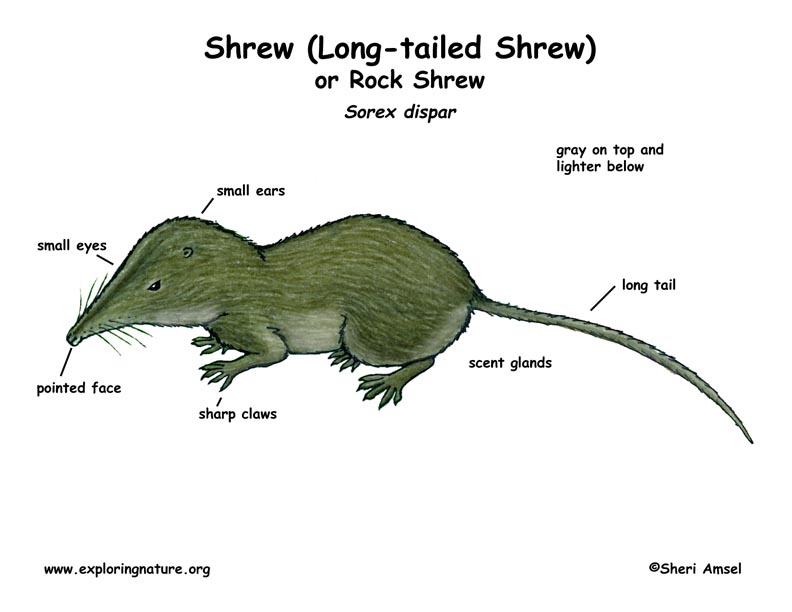

They are found in mountainous areas along the Atlantic coast from southern Canada down through the eastern U.S. to the Appalachian mountains and as far south as Georgia.
They live in the leaf litter and rocky debris along streams and on scree slopes in cool mountain forests, often at high altitudes.
They are slate gray on top and lighter below. They have a pointed face with small eyes and ears. They have a long tail. They reach up to about 4 inches (10cm) long including the tail and weigh less than ¼ ounce (7g). They have scent glands that give off a strong musky smell, probably to discourage predators.
They are active day and night all year round foraging for enough food to maintain their tiny bodies. They need to eat twice their body weight every day. They live alone (solitary) except when breeding. They are territorial and will attack other shrews that they come across.
They eat insects, spiders, centipedes and some plant matter.
They are killed by hawks, owls, weasels and snakes.
Females have several litters from April to August, each having up to 7 young. They are born in a nest of grass and leaves hidden under rocks or in tunnels under the leaf litter. They nurse for 4-5 weeks.
They can live up to 2 years in the wild. They are listed as Lower Risk - Least Concern on the IUCN Red List.
Kingdom: Animalia
Phylum: Chordata
Subphylum: Vertebrata
Class: Mammalia
Order: Soricomorpha
Family: Soricidae
Genus: Sorex
Species: S. dispar
When you research information you must cite the reference. Citing for websites is different from citing from books, magazines and periodicals. The style of citing shown here is from the MLA Style Citations (Modern Language Association).
When citing a WEBSITE the general format is as follows.
Author Last Name, First Name(s). "Title: Subtitle of Part of Web Page, if appropriate." Title: Subtitle: Section of Page if appropriate. Sponsoring/Publishing Agency, If Given. Additional significant descriptive information. Date of Electronic Publication or other Date, such as Last Updated. Day Month Year of access < URL >.
Amsel, Sheri. "Shrew (Long-tailed Shrew) or Rock Shrew" Exploring Nature Educational Resource ©2005-2024. December 13, 2024
< http://www.exploringnature.org/db/view/482 >

